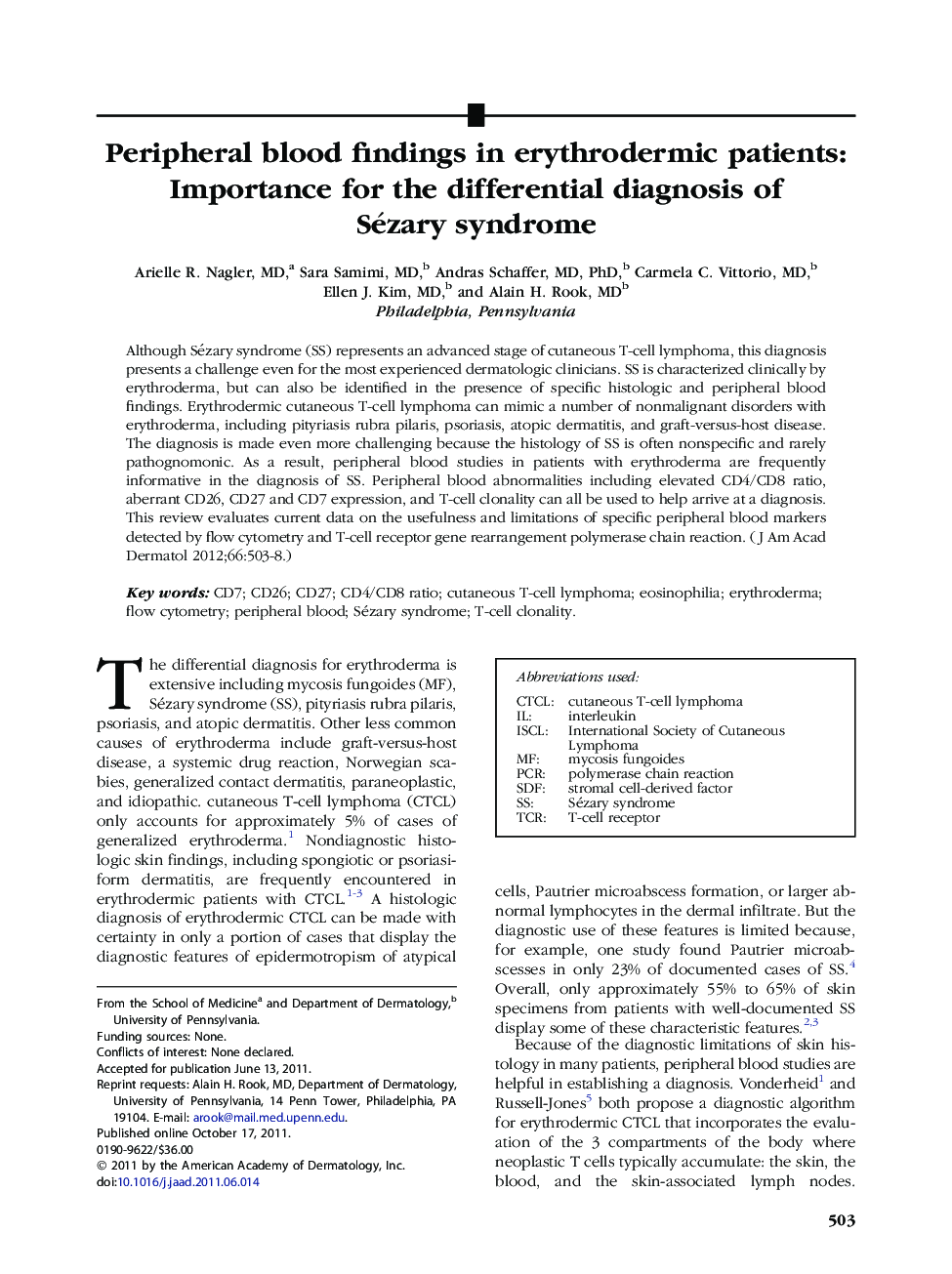| کد مقاله | کد نشریه | سال انتشار | مقاله انگلیسی | نسخه تمام متن |
|---|---|---|---|---|
| 3207087 | 1587568 | 2012 | 6 صفحه PDF | دانلود رایگان |

Although Sézary syndrome (SS) represents an advanced stage of cutaneous T-cell lymphoma, this diagnosis presents a challenge even for the most experienced dermatologic clinicians. SS is characterized clinically by erythroderma, but can also be identified in the presence of specific histologic and peripheral blood findings. Erythrodermic cutaneous T-cell lymphoma can mimic a number of nonmalignant disorders with erythroderma, including pityriasis rubra pilaris, psoriasis, atopic dermatitis, and graft-versus-host disease. The diagnosis is made even more challenging because the histology of SS is often nonspecific and rarely pathognomonic. As a result, peripheral blood studies in patients with erythroderma are frequently informative in the diagnosis of SS. Peripheral blood abnormalities including elevated CD4/CD8 ratio, aberrant CD26, CD27 and CD7 expression, and T-cell clonality can all be used to help arrive at a diagnosis. This review evaluates current data on the usefulness and limitations of specific peripheral blood markers detected by flow cytometry and T-cell receptor gene rearrangement polymerase chain reaction.
Journal: Journal of the American Academy of Dermatology - Volume 66, Issue 3, March 2012, Pages 503–508